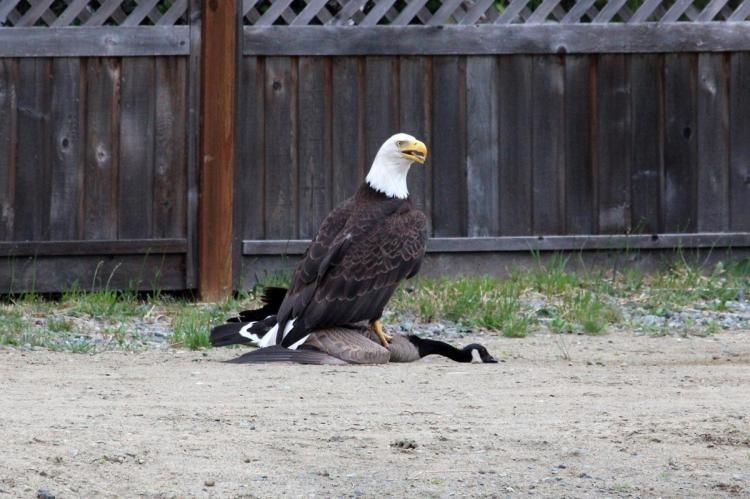He continues to be the best-of-the-best. In case you haven’t seen this clever installment.
from Paper by Mark Kurlansky [via Nina Reznick]
Paper made its first appearance in Europe in the 11th
century, but was expensive and suffered from poor quality. By the 15th century,
it was inexpensive and of good quality, and that dramatically changed the level
of Renaissance art:
"Paper created a monumental
shift in European art. ... Drawing is a primal urge, ... but drawing only
became a standard art form when paper became available. In the case of Europe,
this occurred during the Renaissance, when paper was still a new idea on the
Continent. Previously, there had been very little informal use of parchment for
art because it was too expensive and too difficult to erase. At first, European
paper was also too expensive to be used to dash off a quick sketch and had too low a standing to be used for
serious art. But by the late fifteenth century, this had all changed. Paper
opened up the possibility of the sketch. Renaissance artists sketched out their
work before they drew, painted, or sculpted it -- or, in the case of Albrecht
Dürer's woodcuts, carved it. This new ability to not only plan but
toy with ideas raised their art to a level not known in the Middle Ages.
|
|
|
|
Albrecht Dürer,
Self-Portrait at
Thirteen, 1484
|
|
|
|
"Artists drew and sketched
with varying degrees of skill. Leonardo da Vinci was legendary for his skills
as a draftsman. Michelangelo, known for his frescoes and sculptures, was
equally brilliant as a draftsman -- many art historians consider him to have
been the greatest draftsman who ever lived -- though most of his drawing was
scribbled chaotically on sheets of paper not intended for public view. Both
artists used Fabriano paper at least some of the time.
"Sixteenth-century artist
and historian Giorgio Vasari, whose Lives of the Most Eminent Painters,
Sculptors, and Architects is
the leading source of biographical information on the Italian Renaissance
artists, tells the story of a sketch by Michelangelo that was displayed in the
Palazzo Medici for art students to copy. Since the sheet, like most of Michelangelo's
sheets, had a variety of sketches on it, students started tearing off pieces of
it, and they became 'scattered over many places.' According to Vasari, those
fortunate students who ended up with a remnant treasured it and regarded it as
something 'more divine than human.'
|
|
|
|
|
Head of a Young Woman
-- Da Vinci
|
"Michelangelo used a great
deal of paper, [and] ... almost any piece of paper he used contained a few sketches.
A few are finished drawings. A stunning drawing of the resurrection of Christ
is also marked with a shopping list. Masterful drawings were folded up, with
notes about the banal ephemera of everyday life jotted on the reverse side. ...
"Michelangelo may have been
among the first to jot down quick ideas for himself. Some 2,000 letters from and to Michelangelo have
also been collected. Letter writing is another practice that blossomed with the
widespread use of paper.
|
|
|
The Nuremberg paper mill, the building complex at the lower right corner, in 1493. |
"Leonardo da Vinci was
notorious in his lifetime for his inability to complete projects.
... Fortunately, there was paper, on which Leonardo could capture his
genius. Though he is usually thought of as a painter, only fifteen paintings,
some unfinished, have been found, along with two damaged murals. He also
attempted some sculpture, though he never finished one piece. But he left
behind thirty bound notebooks. Unlike Michelangelo, he did want people to see
this work on paper, including the notes he made in his mirror-image script -- a
curious response to being left-handed. He left drawings depicting all kind of
inventions, and notes on literature, arts, mythology, anatomy, engineering,
and, most of all nature....
"Leonardo also left behind
four thousand sheets of drawings of staggering beauty. He was the first
artist to be recognized for his drawings on paper.
Leonardo's work became the
standard for art in Renaissance Florence. Studying art now meant working on
paper, learning to draw. Leonardo had learned art that way himself, in the
workshop taught by Andrea del Verrocchio. Artists have been trained on paper
ever since."
Banksy Hits Again [Via Nina Reznick]
 |
| The mural appeared overnight on Saturday on the Castle Amusements building in Dover, Kent. Photograph: Hannah Ellis-Petersen for the Guardian |
A Brexit-inspired mural by Banksy showing a metalworker chipping away at a star on the EU flag has appeared in Dover.
The artwork emerged overnight on the Castle Amusements building near the ferry terminal, which connects the UK with mainland Europe.
The mural, which was confirmed by Banksy’s representatives to be a genuine work by the elusive artist, is his first comment on the Brexit vote last year.
The stars of the flag “stand for the ideals of unity, solidarity and harmony among the peoples of Europe”, according to the EU website.
The mural has appeared at a difficult time, when Brexit and the increasingly frosty relationship between Theresa May’s government and the EU over negotiations on Britain’s departure have become central to the general election on 8 June.
This Is Why No One Should Fuck With Nature
1.
HOLY CRAP, some wasps built a nest around this old doll.
reddit.com
DID YOU KNOW: A distressed wasp releases pheromones that alert her colony to join her in stinging her attacker. Ouch.
2.
And these fire ants created a floating island of themselves to survive the Houston flooding. (Yes, those are ANTS.)
reddit.com
DID YOU KNOW: Fire ant "rafts" can survive up to three weeks and have 165% more venom inside them than normal fire ants. 😬😬
And this mom centipede protecting her babies.
reddit.com
DID YOU KNOW: Most centipedes are carnivorous, feasting on crickets, ants, and other small creatures.
This cordyceps fungus is growing on a FUCKING SPIDER.
reddit.com
DID YOU KNOW: Cordyceps fungus is about
as metal as it gets. The parasite takes over an insect's body and can
then control its behavior. One species forces its prey to climb up a
plant stem and die, and its spores are then scattered by the wind to
infect more insects. I WANT MY MOM.
Here is a reindeer shedding its velvet.
DID YOU KNOW: Deer shed their antlers
and the velvet that coats them and then regrow a new set every year.
(The shedding doesn't cause them any discomfort.) Some athletes take
deer velvet supplements as an illicit performance enhancer, as the
velvet contains a growth hormone similar to insulin.
This fiery lava waterfall that looks like it's straight outta Dante.
This bald eagle sitting on top of a goose.
reddit.com
DID YOU KNOW: Eagles typically eat fish, but can kill and eat animals the size of large waterfowl.
Read more
Debussy Play Debussy: A Vintage Recording from 1913
The selection is "La soirée dans Grenade" ("Grenada in the evening"), from Debussy's 1903 trio of compositions titled Estampes, or "Prints." Debussy was inspired by the Symbolist poets and Impressionist painters who strove to go beyond the surface of a subject to evoke the feeling it gave off.
A century ago, the great French composer Claude Debussy sat down at a contraption called a Welte-Mignon reproducing piano and recorded a series of performances for posterity. The machine was designed to encode the nuances of a pianist's playing, including pedaling and dynamics, onto piano rolls for later reproduction, like the one above.
Debussy recorded 14 pieces onto six rolls in Paris on or before November 1, 1913. According to Debussy enthusiast Steve Bryson's Web site, the composer was delighted with the reproduction quality, saying in a letter to Edwin Welte: "It is impossible to attain a greater perfection of reproduction than that of the Welte apparatus. I am happy to assure you in these lines of my astonishment and admiration of what I heard. I am, Dear Sir, Yours Faithfully, Claude Debussy."
read more
Eclipse photos from EarthSky friends [via Pat Francke]
Beverley
Sinclair, who saw the eclipse outside Charleston, South Carolina wrote:
“The skies were very cloudy leading up to totality but, miraculously, slowly
cleared as totality approached.”
“The skies were very cloudy leading up to totality but, miraculously, slowly
cleared as totality approached.”
Karl
Diefenderfer saw the eclipse in Dillard, Georgia. He wrote: “To witness
totality was
one of the most humbling experiences of my life!”
one of the most humbling experiences of my life!”
Steven
Simmerman, who saw the eclipse from Wilson, Wyoming, wrote:
“Extremely clear sky. Saw shadow bands, leaf lens images, drastic drop in
temperature and light as well. Other celestial objects popped out. I didn’t plan
for the darkness and I lost sight of my camera settings. The flash went off by
itself and I could see the luminescence on my watch numerals.
Overall, an awesome experience!”
“Extremely clear sky. Saw shadow bands, leaf lens images, drastic drop in
temperature and light as well. Other celestial objects popped out. I didn’t plan
for the darkness and I lost sight of my camera settings. The flash went off by
itself and I could see the luminescence on my watch numerals.
Overall, an awesome experience!”
An animated take on the eclipse experience, by Rob Pettengill,
who
observed in Tarrington, Wyoming. He wrote: “Condensing
high-resolution still images
into a 256-image, color, animated GIF compromises image detail and quality.
The payoff is that you can see the entire 3-hour eclipse play out in about half a minute.”
into a 256-image, color, animated GIF compromises image detail and quality.
The payoff is that you can see the entire 3-hour eclipse play out in about half a minute.”
Gowrishankar
Lakshminarayanan caught this image of the diamond ring effect,
with friends watching below, in Boysen State Park, Shoshoni, Wyoming.
with friends watching below, in Boysen State Park, Shoshoni, Wyoming.
Observing
from Wyoming, Gowrishankar Lakshminarayanan also caught
the star Regulus in the constellation Leo the Lion, under the eclipsed sun.
the star Regulus in the constellation Leo the Lion, under the eclipsed sun.
Chirag
Upreti caught Regulus, too. He wrote: “During totality, the sun’s
gorgeous
corona was visible with the unaided eye, and below that lay Regulus the heart of Leo.
The two-and-a-half-minute show was spectacular, magical in every aspect.”
corona was visible with the unaided eye, and below that lay Regulus the heart of Leo.
The two-and-a-half-minute show was spectacular, magical in every aspect.”
Mathematical secrets of ancient tablet unlocked after nearly a century of study
Dating from 1,000 years before Pythagoras’s theorem, the Babylonian clay tablet is a trigonometric table more accurate than any today, say researchers.
The tablet, known as Plimpton 322, was discovered in the early 1900s in southern Iraq and has long been of interest to scholars.

The four columns and 15 rows of cuneiform – wedge shaped indentations made in the wet clay – represent the world’s oldest and most accurate working trigonometric table, a working tool which could have been used in surveying, and in calculating how to construct temples, palaces and pyramids.
Opera singer turned horse trainer Heather Main gets the best out of her steeds by singing arias to them.
She strolls around her yard trotting out the classics and the horses respond by launching into a high-pitched whinny – and some even dance behind their stable doors. It may be unorthodox but Heather claims the amazing rapport has led to some impressive results on the track.
She strolls around her yard trotting out the classics and the horses respond by launching into a high-pitched whinny – and some even dance behind their stable doors. It may be unorthodox but Heather claims the amazing rapport has led to some impressive results on the track.
Coke and a Smile! [via Alex Cord}
When you think of riding the subway, laughter and joy aren’t the first words that spring to mind.
It’s a cramped place full of grumpy people either coming home from a bad day at work or are just generally upset.
Yet if you’re lucky enough, sometimes you can find happiness in a subway train.
One such magical moment was captured when a Belgian advertising agency working for Coco-Cola hired an actor to randomly start laughing on the train.
With the tagline–“Happiness starts with a smile”– their new ad aims to bring a bit of joy to everyone’s day.
Just watch and we dare you not to let out a small giggle, or have a smile, too!
Subscribe to:
Posts (Atom)








